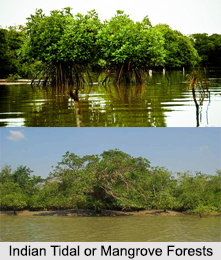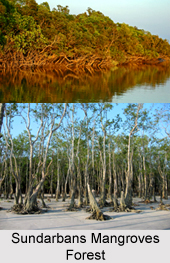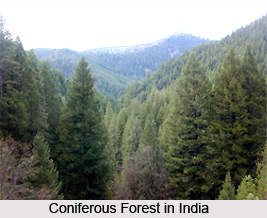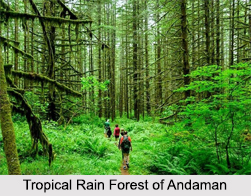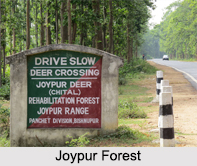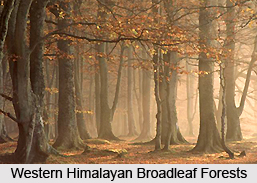 Western Himalayan broadleaf forests are characterised by the broad leaves in herbs and shrubs. This forest is found in the temperate region of Western Himalayas covering the three countries- Nepal. India and Pakistan.
Western Himalayan broadleaf forests are characterised by the broad leaves in herbs and shrubs. This forest is found in the temperate region of Western Himalayas covering the three countries- Nepal. India and Pakistan.
Western Himalayan broadleaf forests are the eco-region forming an area of 55,900 square kilometres of area, in a narrow band between 500 to 2,600 metres that is 4,900 to 8,500 ft of elevation.
Western Himalayan broadleaf forests extend from Gandaki River george in Nepal, through Uttar Pradesh and Himachal Pradesh in northern India, into Jammu and Kashmir and parts of Pakistan.
Western Himalayan broadleaf forests are drier and the forest is more fragmented than its Eastern Himalayan broadleaf forests counterpart, which receives more moisture from the Bay of Bengal monsoon but is still valuable habitat especially as part of the pattern of habitats found at different elevations on the Himalayan mountainsides. Many species of local and exotic birds and animals migrate up and down the mountains seasonally from the grasslands of the plains below to the high peaks of Himalaya.
At lower elevation of Western Himalayan broadleaf forests, this eco-region grades into Himalayan subtropical pine forests. At higher elevations, it grades into Western Himalayan sub alpine conifer forests as well as North western Himalayan alpine shrub and meadows and Western Himalayan alpine shrub and meadows.
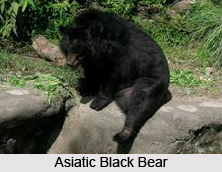
Western Himalayan broadleaf forests may be alienated into forests of two types. These are the evergreen forest of Western Himalayas and deciduous broadleaved forests of west Himalayas.
The evergreen broadleaf forest of Western Himalaya is dominated by oaks, consisting of Quercus semecarpifolia, Quercus dilatata, Quercus lamellosa, and Quercus incana. This forest is typically found on moisture southern slopes, which are more influenced by the monsoon. Various Lauraceae call this forest home, including Machilus odoratissima, Litsea umbrosa, Litsea lanuginosa, and Phoebe pulcherrima. The under-story of Western Himalayan broadleaf forests features a rich assemblage of ferns, mosses, and epiphytes. On northern slopes, drier areas, and higher elevations, Quercus ilex is found, along with coniferous forests representing Abies, Picea, Cedrus, and Pinus.
The deciduous forest of Westrern Himalaya is found along rivers west of the Gandaki River. The deciduous forest of Westrern Himalaya includes Aesculus indica, Juglans regia, Carpinus viminea, Alnus nepalensis, and several Acer species. In drier areas such as the valley of the upper Ghaghara River it includes Populus ciliata, Ulmus wallichiana, and Corylus colurna as well and the riverbanks are dominated by Himalayan Alder (Alnus nitida).
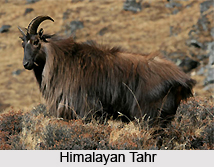 Although there is less wildlife here than the wetter Eastern Himalayas this eco region is home to seventy-six species of mammals. These include the Asiatic black bear, leopard, the Himalayan tahr and the threatened serow. There is one endemic mammal, the Kashmir Cave Bat (Myotis longipes) while the threatened Peter`s Tube-nosed Bat (Murina grisea) is near-endemic.
Although there is less wildlife here than the wetter Eastern Himalayas this eco region is home to seventy-six species of mammals. These include the Asiatic black bear, leopard, the Himalayan tahr and the threatened serow. There is one endemic mammal, the Kashmir Cave Bat (Myotis longipes) while the threatened Peter`s Tube-nosed Bat (Murina grisea) is near-endemic.
About 315 species of birds have been recorded in Western Himalayan broadleaf forests from tiny warblers to large pheasants such as the Western Tragopan, Satyr Tragopan, Koklass Pheasant, Himalayan Monalm and Cheer Pheasant. The near-endemic birds of Western Himalayan broadleaf forests include the White-cheeked Tit, White-throated Tit, Spectacled Finch, Kashmir Flycatcher, Tytler`s Leaf-warbler, Orange Bullfinch, and Kashmir Nuthatch. In previous time Himalayan Quail was found in this eco region.
